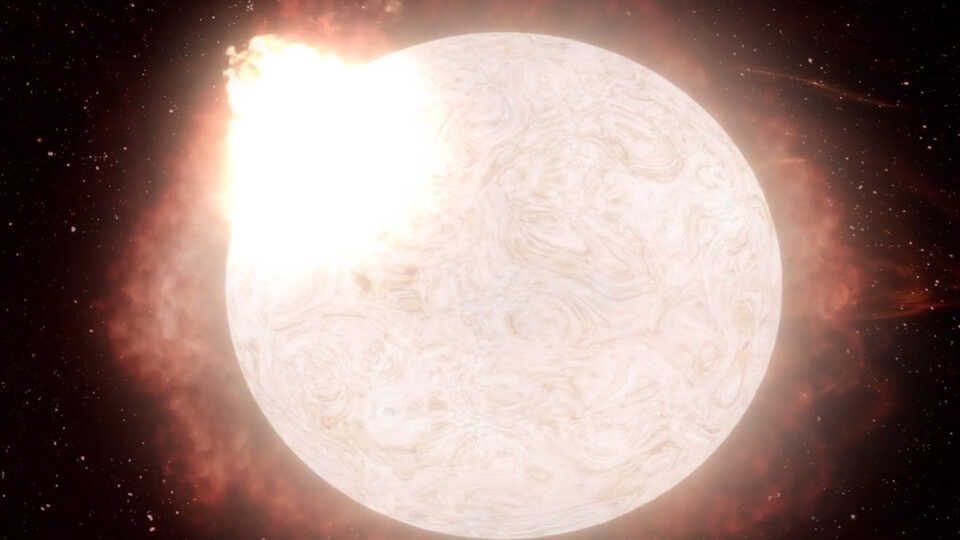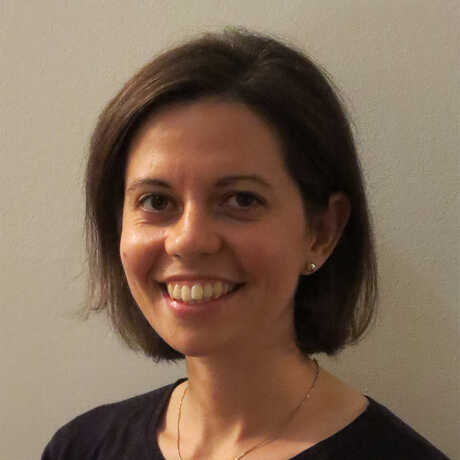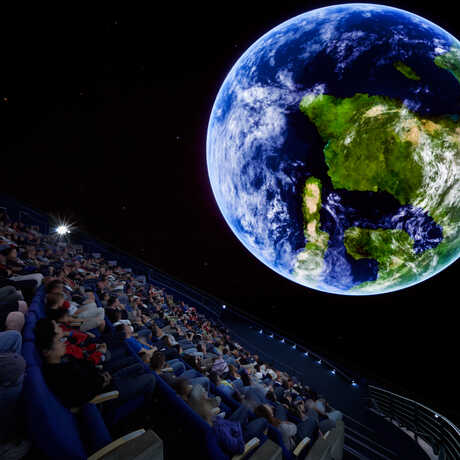$15 per guest Member and senior price: $12. Discount applied after login.
Seating is limited and advance reservations required. To order by phone, call (877) 227-1831.

In the Fall of 2020, astronomers at Keck Observatory in Hawaii made the first direct observation of a massive red supergiant star transitioning into a Type II supernova during its last 130 days before exploding. Image Credit: W. M. Keck Observatory/Adam Makarenko
Cosmic Catastrophes: Transient phenomena and the Renaissance of Astrophysics
Monday, June 6, 2022
7:30 pm
Morrison Planetarium
Featuring Prof. Raffaella Margutti, University of California at Berkeley
Prof. Margutti will share how new capabilities to study the night sky have led to recent discoveries and new ways to think about the universe around us. Astronomical transients are events that appear and disappear in the sky and are signs of catastrophic events in space, including the most extreme stellar (star) deaths and interactions between stars and supermassive black holes.
Thanks to new and improved observational facilities, which use measurements of gravitational waves and light, we can now sample the night sky for astronomical transients with unprecedented resolution across the electromagnetic spectrum and beyond. This effort has led to the discovery of new types of stellar explosions, revolutionized our understanding of phenomena that we thought we already knew, and enabled the first insights into the physics of how black holes and stars interact.

Raffaella Margutti received her undergraduate degree in Astrophysics in 2006 (magna cum laude), and her PhD in Physics and Astronomy from the University of Milano Bicocca in 2010. Margutti is a Sloan Fellow in Physics (2019), a CIFAR global scholar in Gravity and the Extreme Universe (2019), and received the 2022 New Horizons in Physics Prize for leadership in laying foundations for electromagnetic observations of sources of gravitational waves, and leadership in extracting rich information from the first observed collision of two neutron stars.
From outer space to Earth's inner core, explore the universe from Morrison Planetarium's 75-foot digital dome.

Download Morrison Planetarium's 2024 Pocket Almanac to stay up-to-date on eclipses, meteor showers, satellite spottings, and more.
